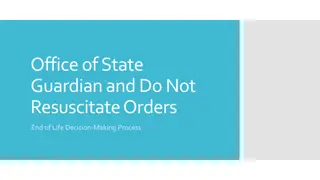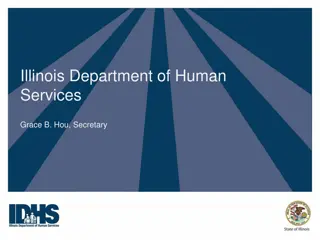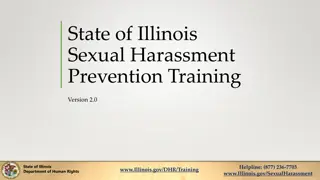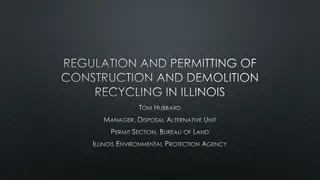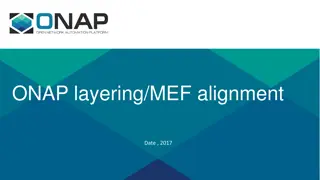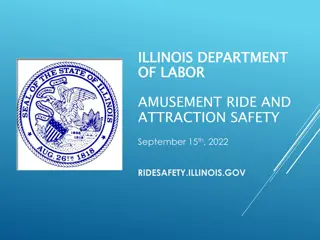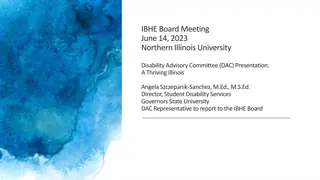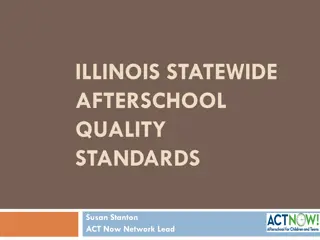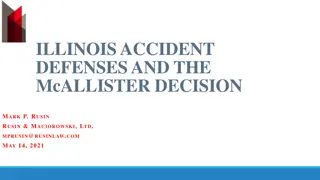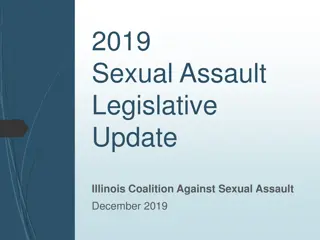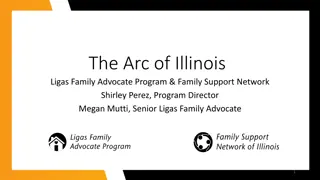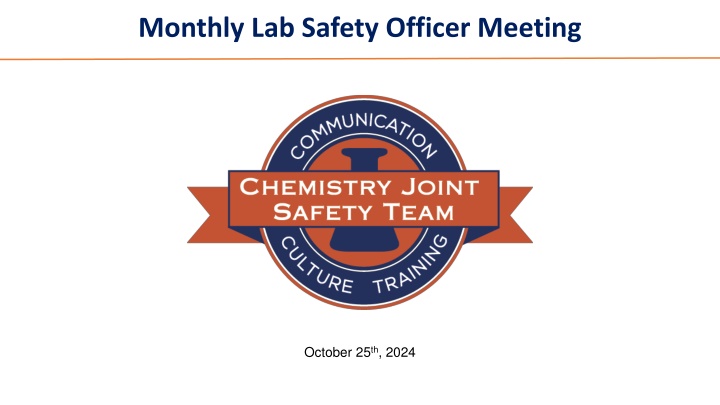
Monthly Lab Safety Officer Meeting Incident Review: Vacuum Trap Content Explosion
Review the incident of a vacuum trap content explosion during a sublimation process, detailing the precautions taken, lessons learned, and preventive measures to enhance lab safety.
Uploaded on | 3 Views
Download Presentation

Please find below an Image/Link to download the presentation.
The content on the website is provided AS IS for your information and personal use only. It may not be sold, licensed, or shared on other websites without obtaining consent from the author. If you encounter any issues during the download, it is possible that the publisher has removed the file from their server.
You are allowed to download the files provided on this website for personal or commercial use, subject to the condition that they are used lawfully. All files are the property of their respective owners.
The content on the website is provided AS IS for your information and personal use only. It may not be sold, licensed, or shared on other websites without obtaining consent from the author.
E N D
Presentation Transcript
Monthly Lab Safety Officer Meeting October 25th, 2024
Agenda 1. Announcements a) Change of LSO Form https://forms.gle/BsQQuzsK5F7c3kqq6 b) Reporting Incidents to DRS Phone: 217-333-2755 Email: drs@illinois.edu Submit an Event Report: https://forms.illinois.edu/sec/1674176205?referrer=https://shibboleth.illinois.edu/ c) Anonymous Near Misses and Incidents Form for the JST https://forms.gle/88wVJ8gHXFoMqBtw5 2. Open Discussion Facilities Issues/Updates Gloves Recycling Program Announcement 3. Recent Near Miss/Incident Reports 1 incident submitted this month - Explosion of contents of vacuum trap 4. Safety Minute Incident review: Explosion of contents of vacuum trap 2
Open Discussion/Facilities Updates Any facilities issues or updates Safety concerns or comments? Suggestions for future meeting topics? 3
Incident Review: Vacuum Trap Content Explosion Quick Overview: Schlenk line is a dual manifold system - the two manifolds have several ports which are interconnected via double oblique stopcocks or Teflon taps, which allow sealed vessels attached to the Schlenk line to be evacuated under vacuum or back-filled with inert gas. 4
Incident Review: Vacuum Trap Content Explosion Sublimation using Schlenk line: To purify/separate compounds which sublimes, vacuum port of the Schlenk line is connected to the sublimator apparatus containing the compound of interest to apply the required vacuum for sublimation. Generally, the sublimed products condense back on a cooled part (generally a cold finger) inside the apparatus. The vacuum facilitates the process of sublimation. What happened? A sublimation was being performed using the Schlenk line setup. As protocol dictates, while conducting the sublimation the glassware, including the flasks up to the arm of the stopcock, was cooled to -78 C for at least 20 minutes. This is to avoid flammable product ending in the Schlenk line's vacuum trap. After finishing the sublimation, it is suspected that some of the products still ended up in the trap. Alternatively, a small amount of diborane (B2H6) might have been generated which condensed in the trap. After allowing the trap to warm to room temperature, the trap was disconnected from the trap head and fumes were seen forming from the trap head as well as from the trap. Shortly, thereafter, the contents of the trap exploded. No injuries were reported. 5
Incident Review: Vacuum Trap Content Explosion What precautions were taken? Relevant sublimation glassware and vacuum trap were cooled using liquid nitrogen. Chemical fume hood sash was lowered a very good practice. Proper PPE - safety glasses, flame resistant lab coat, gloves were used. Lessons learned/How can this incident be prevented: Venting the trap with argon instead of air when there is a possibility of flammable/air reactive product ending in the vacuum trap. Some arrangements to quench the trap under inert atmosphere before exposing the contents to air could prevent this type of incident. Any other comments/suggestions from the audience? 6
Useful Links on Schlenk Line and Associated Processes Schlenk Line Survival Guide: https://schlenklinesurvivalguide.com/ An Illustrated Guide to Schlenk Line Techniques: https://pubs.acs.org/doi/10.1021/acs.organomet.2c00535 7
New LSO Training: Looking for Volunteers Role and responsibility of the LSO mentor: Help and guide the new LSOs to understand their role and responsibilities as an LSO, introduce them to different safety resources e.g., the DRS website, SCS Safety contacts, Joint Safety Team, etc., give general guidance on how to create safety manuals/protocols/SOPs for the new labs. We are looking for volunteers (current LSOs) so that new LSOs from different areas (inorganic, organic etc.) can be paired up with someone from same area as a mentor LSO. Please refer to the email for further details If you are interested, please sign up here: https://forms.gle/RvubUBkvS9QvLWN46 8
Safety Contact Training from DRS DRSrecently launched a new training specifically for safety contacts. This can be a great resource for new safety contacts. Check it out at: https://ovcrportal.research.illinois.edu/Training/Overview.aspx?TrainingId=409 9
Thank you for coming! Please forward LSO meeting recap email/slides to your group! We can stay for a few minutes if there are further questions. We are taking attendance based on the participant list! No need to sign in. 10

